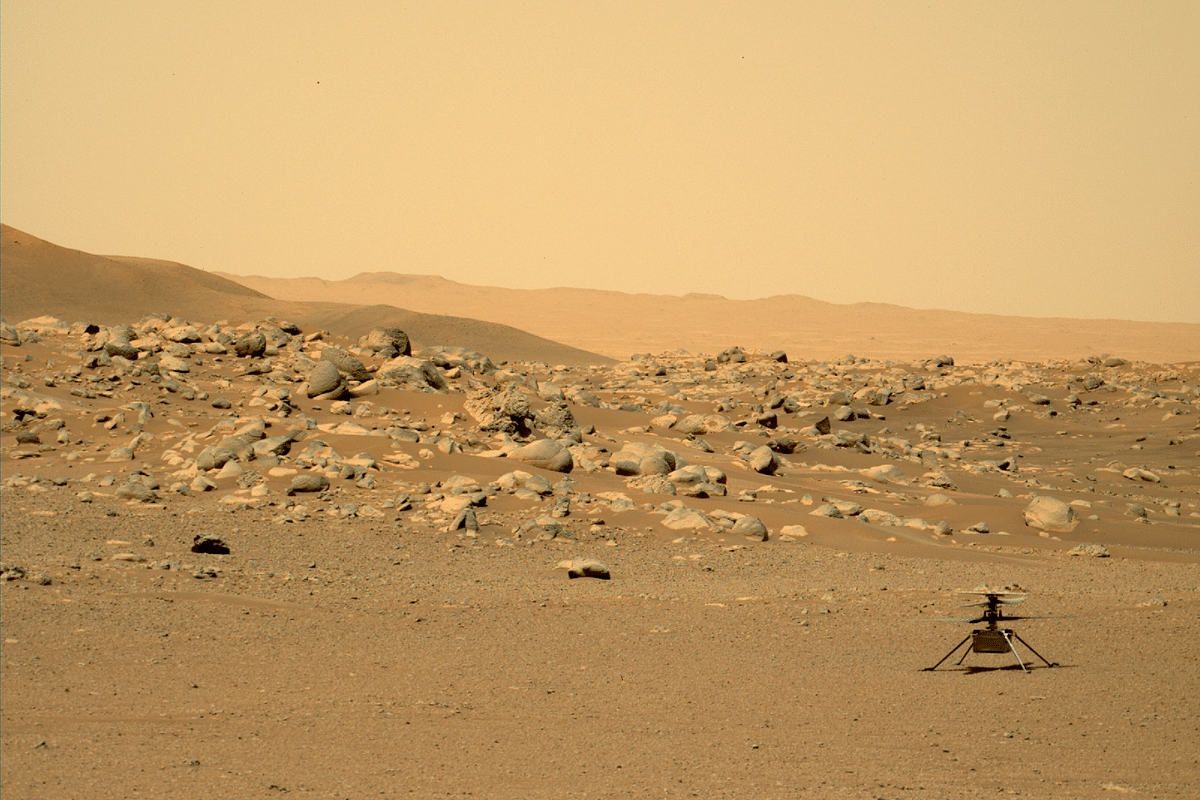Science
NASA's Ingenuity Mars Helicopter Logs Fiftieth Flight As It Nears Two-year Anniversary Of Historic First Flight

This image of NASA’s Ingenuity Mars Helicopter was taken by the Mastcam-Z instrument of the Perseverance rover on 15 June 2021. The location, "Airfield D" (the fourth airfield), is just east of the "Séítah" geologic unit. (Photo: NASA/JPL-Caltech/ASU/MSSS)
On its record fiftieth flight on 13 April, the Ingenuity helicopter of the National Aeronautics and Space Administration (NASA) covered a distance of 1,057.09 feet (ft), or 322.2 metres (m), in 145.7 seconds, and set a new altitude record of nearly 59 ft (18 m) on Mars.
"Just as the Wright brothers continued their experiments well after that momentous day at Kitty Hawk in 1903, the Ingenuity team continues to pursue and learn from the flight operations of the first aircraft on another world," said Lori Glaze, director of the Planetary Science Division at NASA Headquarters in Washington.
"With Flight 50 in the mission logbook, the helicopter team plans to perform another repositioning flight before exploring the “Fall River Pass” region of Jezero Crater," NASA said.
Watch this nearly minute-long video of the achievement.
Ingenuity, carried by NASA's Perseverance rover, arrived on Mars in February 2021. Its first flight took place on 19 April that year, and will soon celebrate two years since then.
NASA said Ingenuity will face more difficult terrain and fly frequently to stay within the rover's electronic range in the coming days.
Ingenuity is light, with a weight of 1.8 kg (less than 0.7 kg on Mars), and has rotors stretching across 1.2 metres and ready to spin at about 2,400 rpm.
The blades are made of carbon fibre foam. A solar panel on board keeps the lithium-ion batteries charged.
The rotorcraft is equipped with antennas, cameras, and sensors — the antennas help in communicating with the Earth via the rover, sensors help in tracking the speed, and cameras (one colour and one black-and-white) help with sight.
It was designed as a technology demonstration that would fly no more than five times, and intended to prove powered, controlled flight on another planet.
Safe to say now, it has far exceeded expectations and "transitioned into being an operations demonstration."
NASA’s most ambitious Mars rover mission yet hopes to learn whether the Red Planet was ever home to life in the 4.6 billion (~460 crore) years of its existence.
Support Swarajya's 50 Ground Reports Project & Sponsor A Story
Every general election Swarajya does a 50 ground reports project.
Aimed only at serious readers and those who appreciate the nuances of political undercurrents, the project provides a sense of India's electoral landscape. As you know, these reports are produced after considerable investment of travel, time and effort on the ground.
This time too we've kicked off the project in style and have covered over 30 constituencies already. If you're someone who appreciates such work and have enjoyed our coverage please consider sponsoring a ground report for just Rs 2999 to Rs 19,999 - it goes a long way in helping us produce more quality reportage.
You can also back this project by becoming a subscriber for as little as Rs 999 - so do click on this links and choose a plan that suits you and back us.
Click below to contribute.
Latest